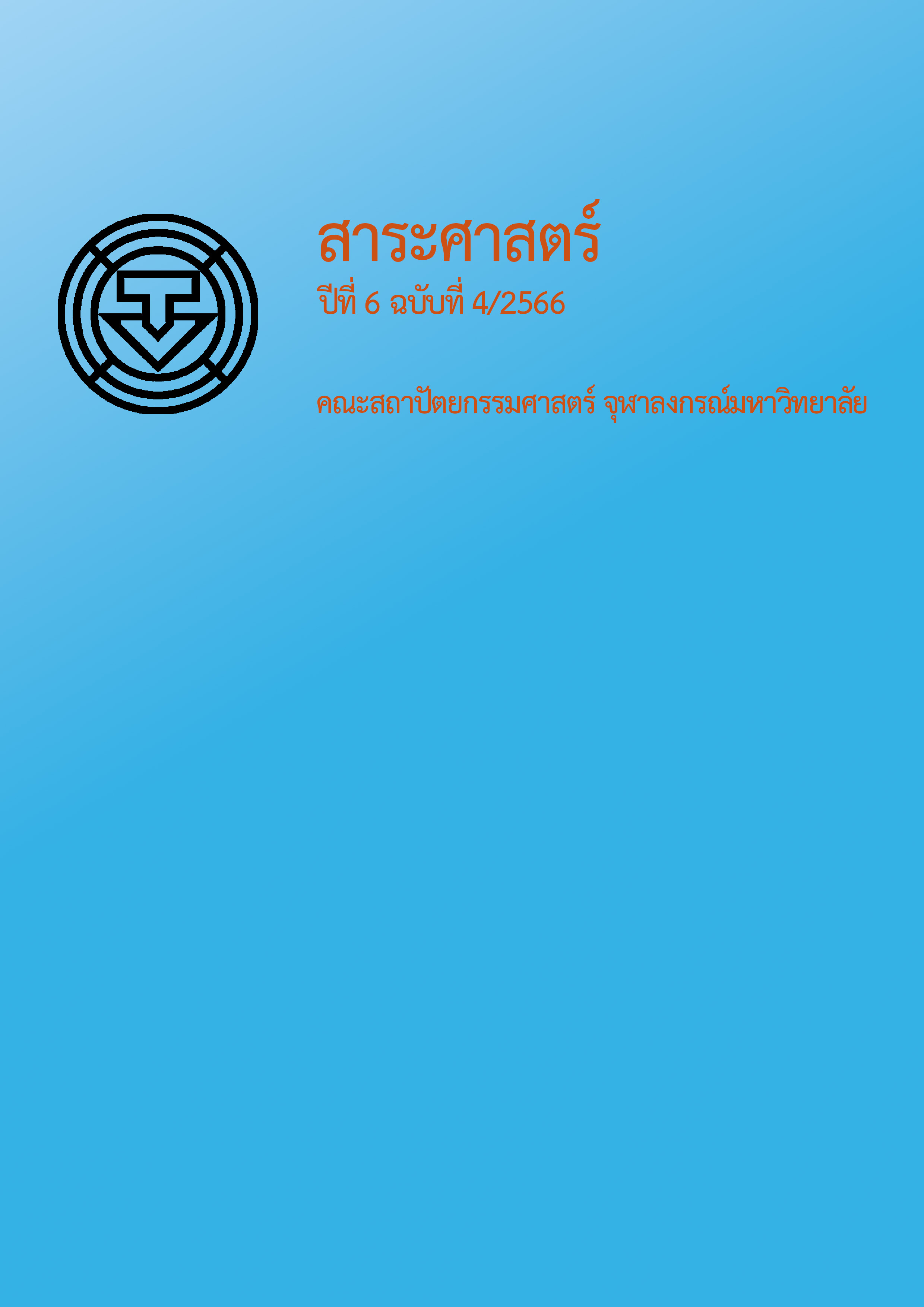Relationships of Real Estate Development, Infrastructure, and Public Services Complying with Comprehensive Plan: A Case Study of Ratchapruek and Kallaprapruk Roads
Main Article Content
Abstract
The development of government infrastructure stimulated housing development in Bangkok. In the past 20-30 years ago (1999-2021), The growth of the transportation network impacted the west Bangkok development area Such as Kanchanapisek Road, Borommaractchachonani Road, Ratchapruek Road, and Kallaprapruk Road. The researcher is interested in studying the pattern of the type of housing development, public facilities, and infrastructure as well as their development problems. The study brought the development patterns and development plans of the government sector to consider the development timeline that will be beneficial to the government in determining a plan for the development of urban expansion in the future by using the survey method to collect data from websites and research documents.
The result of the study researcher presents in 3 main parts. 1) It found clusters of 3 real estate types, including residential, commercial, and public facilities. The single detached houses are clustered in the Ratchapruek area. The row houses and condominiums clustered in the Kallaprapruk area. 2) It was revealed that the high density of real estate developments related to heavy traffic in the morning and evening, or heavy traffic around the commercial zone during the day. It can be noted that the actual transportation routes have not conformed to the transportation plan of the Bangkok comprehensive plan. 3) The time series of development maps showed that housing estate developments are the first development after the new road was developed. Later, when residential developments become higher density. Commercial developments and public facilities are followed. The actual land use conforms to the Bangkok comprehensive plan. Although, the development of public utilities have been covered in the areas,
they were not the results of the government plan. In fact, they were developed mainly by the private sector. It can be concluded that the development pattern in these areas has not been well proceeded to conform the comprehensive plan in the study areas.
Article Details
References
กฎกระทรวงให้ใช้บังคับผังเมืองรวมกรุงเทพมหานคร พ.ศ. 2556. (2556, 16 พฤษภาคม). ราชกิจจานุเบกษา. เล่ม 130 ตอนที่ 41ก หน้า 1.
กรมธนารักษ์. (2565). สรุปราคาประเมินที่ดินรายหน่วยที่ดิน รอบบัญชีปี พ.ศ. 2566 – 2569 จังหวัดกรุงเทพมหานคร.http://assessprice.treasury.go.th/
กรุงเทพมหานคร. สำนักการวางผังและพัฒนาเมือง. กองนโยบายและแผนงาน. (2565). ราคาประเมินทุนทรัพย์ที่ดินในเขตกรุงเทพมหานคร. https://webportal.bangkok.go.th/cpud
GOOGLE EARTH PRO URBAN TH. (2527-2563). ภาพถ่ายทางอากาศ บริเวณฝั่งตะวันตกของกรุงเทพมหานคร.
Christaller. (2476). แนวคิดทฤษฎี Central place theory. https://www.greelane.com/th/มนุษยศาสตร์/ภูมิศาสตร์/central-place-theory-1435773
ชูชาติ เตชะโพธิวรคุณ. (2561). การกระจายเชิงพื้นที่ของหมู่บ้านจัดสรรภายในเขตพื้นที่กรุงเทพมหานครฯ กรณีศึกษา เขตหนองจอก. https://so01.tci-thaijo.org/index.php/arch-kku/article/view/109489
Think of living. (2563). ประเภท segment ของคอนโดมิเนียมและบ้านแนวราบกับการรีวิวเจาะลึก. https://thinkofliving.com/ข่าว/ประเภท-segment-ของคอนโดมิเนียมและบ้านแนวราบ-กับการรีวิวเจาะลึก-10724
ปานปั้น รองหานาม . (2558). วิวัฒนาการผังเมืองของประเทศไทย Evolution of urban planning of Thailand. https://so04.tci-thaijo.org/index.php/NAJUA/article/view/44791
พนิต ภู่จินดา และยศพล บุญสม. (2559). แนวคิดเมืองต้นแบบ Urban design guideline for specific purposed towns. https://so02.tci-thaijo.org/index.php/jed/article/view/68472
สุลักษณ์ สังข์รุ่ง. (2538). การควบคุมการขยายตัวตามแนวถนนสายหลักของกรุงเทพมหานคร : กรณีศึกษาถนนศรีนครินทร์ [วิทยานิพนธ์ปริญญามหาบัณฑิต ไม่ได้ตีพิมพ์]. จุฬาลงกรณ์มหาวิทยาลัย.
Harris & Ullman. (2514). แนวคิดทฤษฎี Multi nuclei theory. http://digital_collect.lib.buu.ac.th/dcms/files/51810257/chapter2.pdf


